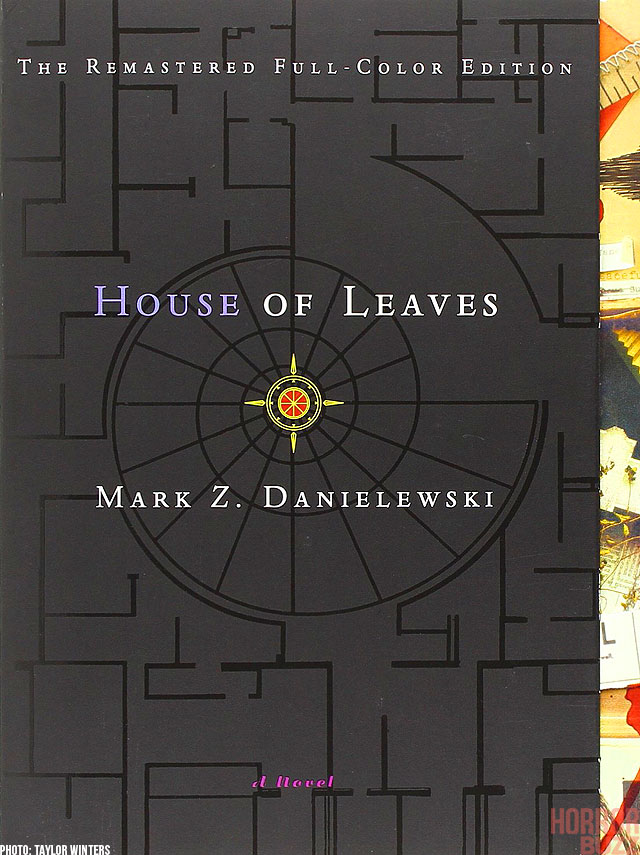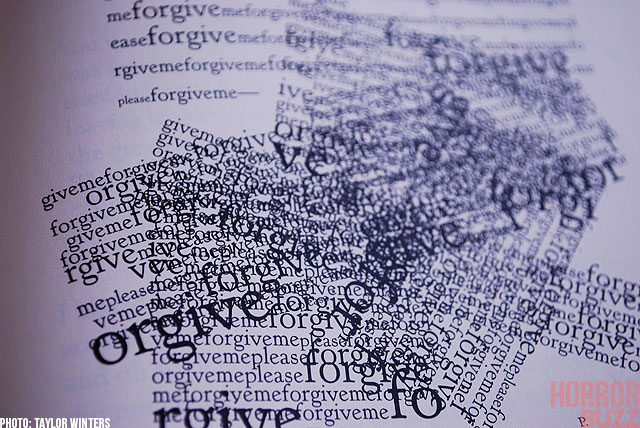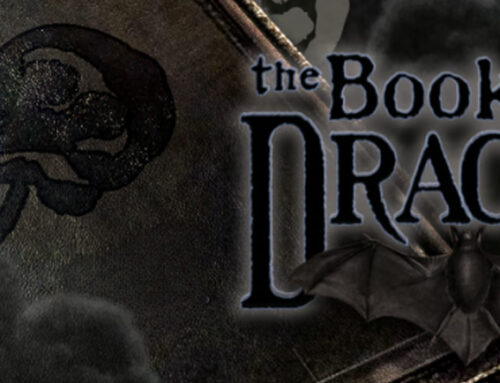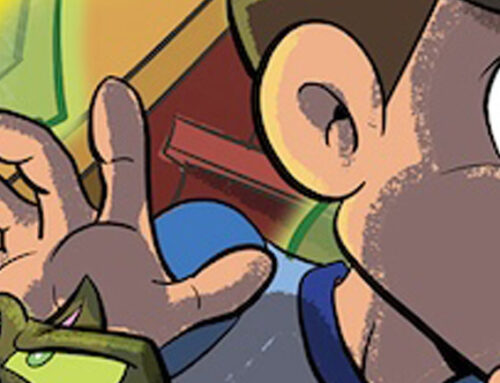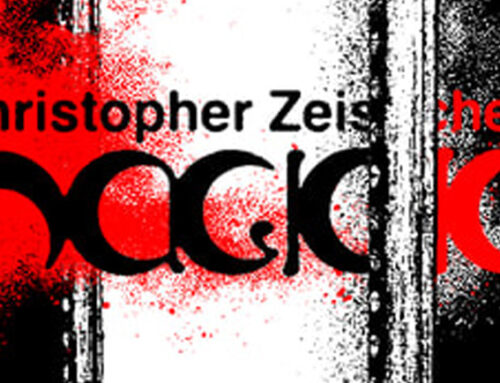The beauty of literature is how easy it is to be immersed in it, to get lost in the words and escape the current reality. Unlike a haunt, play, or game, which are forced to rely on visuals (or lack thereof) to immerse you, books have the unique ability to allow your mind to paint your own visuals. However, most books stop there. The words on the page, as beautiful as they are, tell one story, one visual. However, authors are now becoming more creative in their methods of story telling, layering narratives upon each other and utilizing the book itself (rotated text, blank pages, colored text, clues, footnotes, and so forth) to tell the story.
House of Leaves by Mark Z. Danielewski was the first book to fully embrace this layering, this depth. Multiple different narratives occur in the overall story, as well as in the book itself. Not like a normal story where different characters exist in the same universe. No, in this novel, they are layered upon each other. The base layer is a novel known as The Navidson Record. This record tells the story of Will Navidson, his wife, and two children, who move into a house in Virgina. Yet upon returning home from vacation, they find that a small closet-like space has appeared where only a blank wall existed before. Upon further examination, the inside of this room’s dimensions are mismatched with the dimensions of the outside of the house. How can something be bigger on the inside? As time passes, more hallways and rooms appear, as well as a large spiral staircase that descends into darkness and appears to have no end. The walls have no adornments and there is no sound–apart from a low growl that can be heard from deep within. Armed with a video camera, his brother and some colleagues, Navidson decides to explore the house’s endless array of rooms, passages, and nothingness. The Navidson Record is the novel you are reading.
If the book was just this, it would be an interesting, yet lackluster novel. But where things get interesting is the next layer. Zampano, an old blind man, finds The Navidson Record and decides to publish it. Little information is given regarding him, and we never heard directly from him. But he compiles all of these notes, videos, interviews, and pages on this record. While doing so, something begins to scare him–and he boards up his house from the inside. He soon dies mysteriously–with claw marks found on the inside.

So two layers in, and now things start to get interesting. So this trunk filled with all the papers regarding The Navidson Record are found by Johnny Truant. He assumes the role of editor of Zampano’s The Navidson Record and begins to compile this book together. So while you are reading the novel, it is littered with footnotes from Johnny (sometimes his footnotes rival the length of The Navidson Record’s chapter). This range from anecdotes from his personal life regarding his druggie friend Lude and a stripper named Thumper, to his questionings of the honesty in Zampano’s manuscript. Truant is unable to find mention of the house, of the interviews about the story, or the film itself. But is it Zampano who is untrustworthy? Or is it Johnny? We only hear one side of the story: Johnny’s. Interestingly, Johnny works at a tattoo parlor, but speaks latin. Thing’s aren’t quite as they seem.
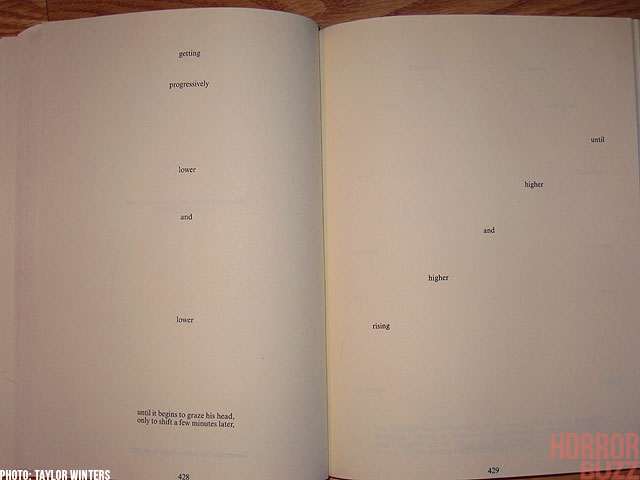
Finally, the last layer is the novel I have in my hand. This is compiled by “The Editors” who also leave footnotes to remark on small things they noticed while publishing the book. These reveal a lot into the background of Johnny and his mother, especially in a full appendix in the back filled with full color pictures, letters, poems, and much much more (more can be found in a companion book, The Whalestoe Letters. Each author is given their own font, and every time the word “House” is written, it’s written in blue ink. These little artistic choices really add to the “coolness” of the book.
But beyond that of the narrative choices is the style of the book itself. And this is what makes the book so special to me. When you open this book and flip through the pages, the uniqueness jumps right out at you. Words do not behave as you’d expect in a normal book (for lit nerds, this is ergodic literature). They start like a normal book, with standard paragraph format, but as the narrative moves on, they grow and shrink, spiral across the page, or disappear from the page completely. This unconventional style, format, and structure are what defines the book. This isn’t merely a stylistic choice, either. The syntax itself compliments the story perfectly. When the characters are experiencing some disorientation, you will too; when the characters are traveling deeper and deeper into the unknown, the words on the page become more and more sparse, requiring more and more turns of the page to continue. This mirroring of the words and the story are meant to create an agoraphobic and claustrophobic effect, and trust me, it does.
This is not an easy book to read. It’s deep, it’s layered, and it’s thought-provoking. It is also a book that sticks with you–much like it stuck with Johnny and Zampano. Once you finish the book, you are left with questions that you can answer, but the answers are your answers, which again, may not be the truth. Are the character’s telling the truth? Is The Navidson Record real? Are the characters even real? These are questions you’ll have to decide upon for yourself, and most people I talk to have very different opinions.
If you’ve read it or want to read it, I’d love to hear your thoughts.
Little Solace comes / to those who grieve / when thoughts keep drifting / as walls keep shifting / and this great blue world of ours / seems a house of leaves / moments before the wind..

